Football is more than just a game of goals; it’s a game of strategy and carefully planned moments. At its core, football can be broken down into distinct phases of play. Each phase represents a different moment in the game when teams must adapt their tactics to the situation. Whether in possession, out of possession, transitioning between the two, or dealing with set-pieces, every moment requires focus, preparation, and execution.
In this article, we will dive deep into the five main phases of play: attacking, defending, attacking transitions, defensive transitions, and set-pieces. These phases are the foundation of every tactical approach in football, forming the blueprint for how teams operate on the pitch. Let’s explore how each phase works, the key principles involved, and examples from some of the world’s most successful teams.
1. The Attacking Phase
The attacking phase occurs when a team has possession of the ball and is actively working to create goal-scoring opportunities. This phase begins when the team wins the ball and ends when possession is lost, a goal is scored, or the ball goes out of play.
Key Principles of the Attacking Phase
- Build-Up Play:
The attacking phase often starts in the defensive or midfield third, where teams focus on carefully progressing the ball. Build-up strategies vary depending on the team’s style. For example, some teams prefer patient, short passing, while others rely on long balls to bypass the midfield. Concepts like creating overloads, switching play, or using deep-lying playmakers are key during this stage. - Creating Space:
Off-the-ball movement is essential in the attacking phase. Players make runs to stretch the opposition’s defensive lines, whether by attacking wide spaces, dropping into midfield to drag defenders out of position, or making diagonal runs behind the backline. - Breaking Down Defenses:
When facing a low-block, teams rely on creativity and quick passing combinations to exploit gaps. Wing play, overlapping fullbacks, and clever one-two passes are common tools for breaking through compact defenses.
Example:
Pep Guardiola’s Manchester City exemplifies a methodical attacking phase, with players maintaining strict positional play to create passing lanes, overwhelm opponents with overloads, and manipulate defensive structures to find gaps.
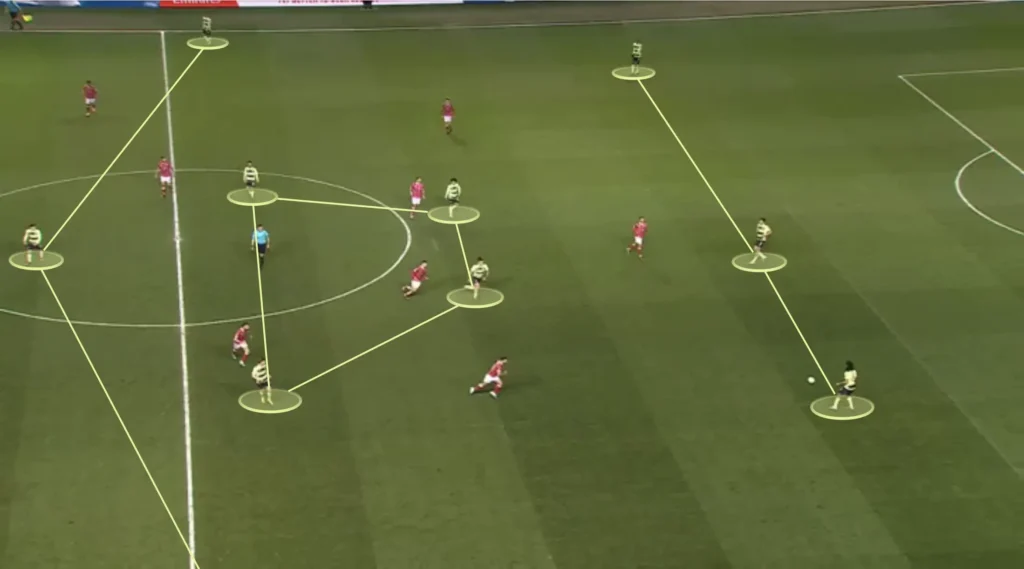
2. The Defensive Phase
The defensive phase begins when a team loses possession of the ball and needs to prevent the opposition from advancing or creating chances. Success in this phase requires discipline, organization, and teamwork.
Key Principles of the Defensive Phase
- Shape and Compactness:
Teams focus on maintaining their defensive shape, whether it’s a 1-4-4-2, 1-4-5-1, or 1-5-3-2. The goal is to remain compact, limit space in central areas, and force the opposition into less dangerous wide areas. - Pressing and Engagement:
Defensive styles vary widely, from high-pressing systems that aim to win the ball back quickly to low-blocks that defend deep and invite pressure. Teams like Hansi Flick’s FC Barcelona press aggressively in the opponent’s half, while Diego Simeone’s Atletico Madrid prefers a low-block system, staying compact and waiting for mistakes. Additionally, the mid-block has gained much popularity recently, with teams like Arne Slot’s Liverpool and Mikel Arteta’s Arsenal using it effectively to win games. - Defensive Marking:
Teams use a combination of zonal and man-marking to track runs, cut off passing lanes, and close down attackers in dangerous areas. Communication and anticipation are critical to ensuring defensive stability.
Example:
Atletico Madrid under Diego Simeone is a masterclass in defensive organization. Their ability to remain compact and disciplined under pressure makes them one of the toughest teams to break down in modern football.
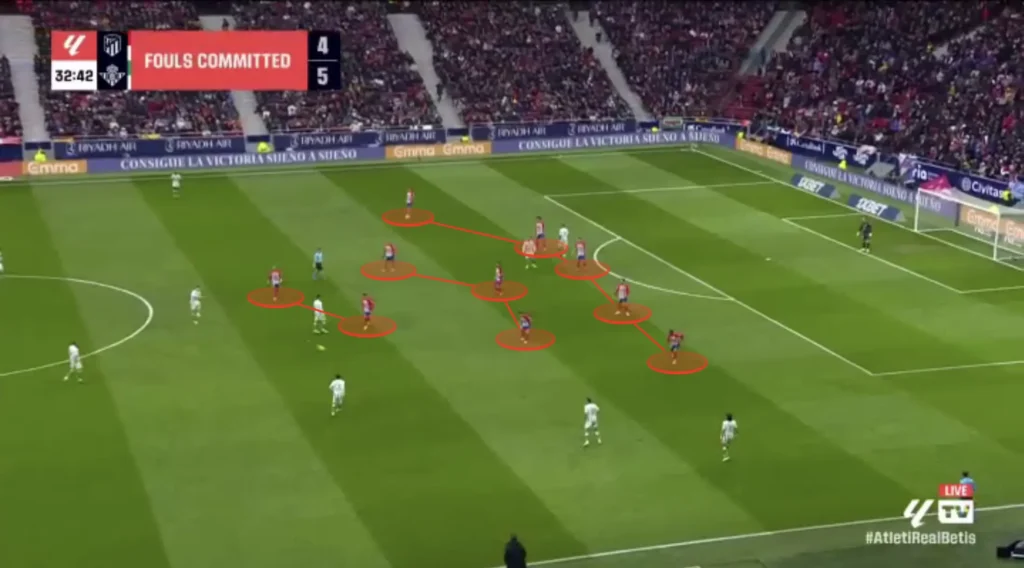
3. Attacking Transitions
Attacking transitions occur immediately after a team wins possession of the ball. This is one of the most exciting and chaotic phases of play, as the team that just lost possession is often unorganized and vulnerable to quick attacks.
Key Principles of Attacking Transitions
- Speed and Directness:
The key to successful attacking transitions is speed. Teams look to exploit the disorganization of the opposition by moving the ball forward as quickly as possible, often targeting spaces left behind by advancing defenders. - Exploiting Space:
Counterattacks are often directed into wide areas or behind the defensive line. Players with pace and good off-the-ball movement thrive in these moments. - Recycling Possession:
Suppose the team has defended for long periods of the game or there is no space to effectively exploit. In that case, the team can recycle possession in the attacking transition instead of immediately going forward. This means passing it sideways or backward out of the space where the ball was won and then beginning with a more methodical build-up.
Example:
Nuno Espírito Santo’s Nottingham Forest have reached success lately through their devastating counterattacks, with players like Callum Hudson-Odoi and Anthony Elanga exploiting spaces created during attacking transitions.
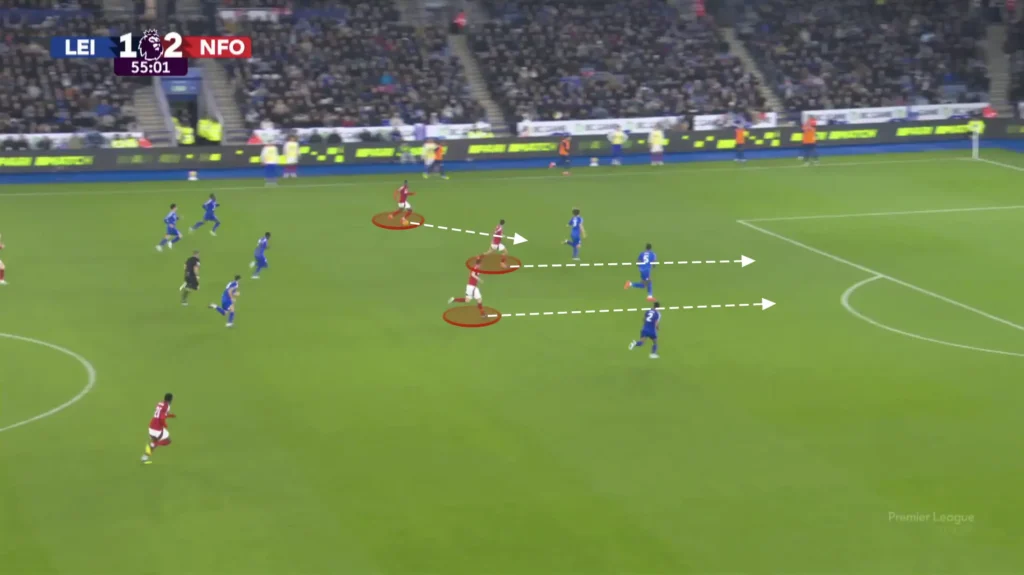
4. Defensive Transitions
The defensive transition begins the moment a team loses possession of the ball. This phase is critical because a poorly executed defensive transition can leave a team exposed to counterattacks.
Key Principles of Defensive Transitions
- Counterpressing (Gegenpressing):
High-intensity teams immediately press the opposition after losing possession, aiming to regain the ball before the opponent has time to organize their attack. - Recovery and Reorganization:
If pressing fails, players must quickly recover and drop back into their defensive shape. The speed and coordination of this recovery process often determine how well a team handles defensive transitions. - Delay and Disruption:
If regaining possession is not possible, players aim to slow down the opponent’s attack by forcing them to play backward or sideways. This buys time for the rest of the team to reorganize.
Example:
Liverpool under Jürgen Klopp were known for their excellent defensive transitions, often regaining possession within seconds of losing it.
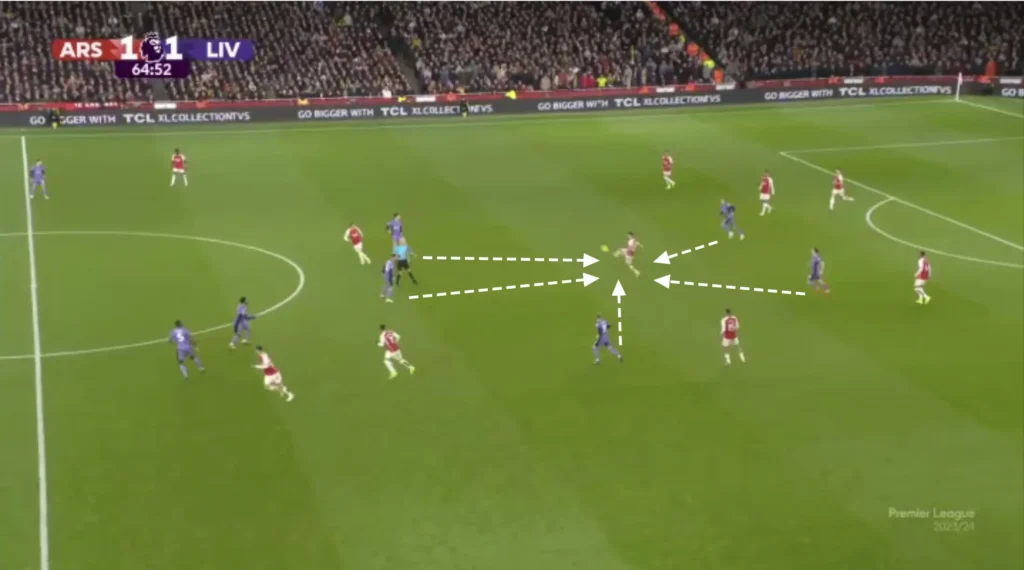
5. Set-Pieces
Set-pieces are moments when the ball is out of play, such as free-kicks, corners, throw-ins, or penalties. While they may seem like isolated incidents, set-pieces are a crucial phase of play that can often decide the outcome of a match.
Key Principles of Set-Pieces
- Attacking Set-Pieces:
Teams use rehearsed routines to maximize their chances of scoring, whether through pinpoint crosses, decoy runs, or quick short passes to catch the defense off guard. - Defensive Set-Pieces:
Defending set-pieces requires organization and focus. Teams often use zonal marking, man-marking, or a hybrid of both to prevent goals. - Transition Awareness:
After a set-piece, teams must be prepared to react to potential counterattacks. Defenders often remain near the halfway line to stop fast breaks, and attackers are ready to quickly make runs up the pitch if the ball is recovered.
Example:
Thomas Frank’s Brentford is one of the most efficient teams in Europe when it comes to set-pieces, using detailed preparation and innovative routines to gain an edge.
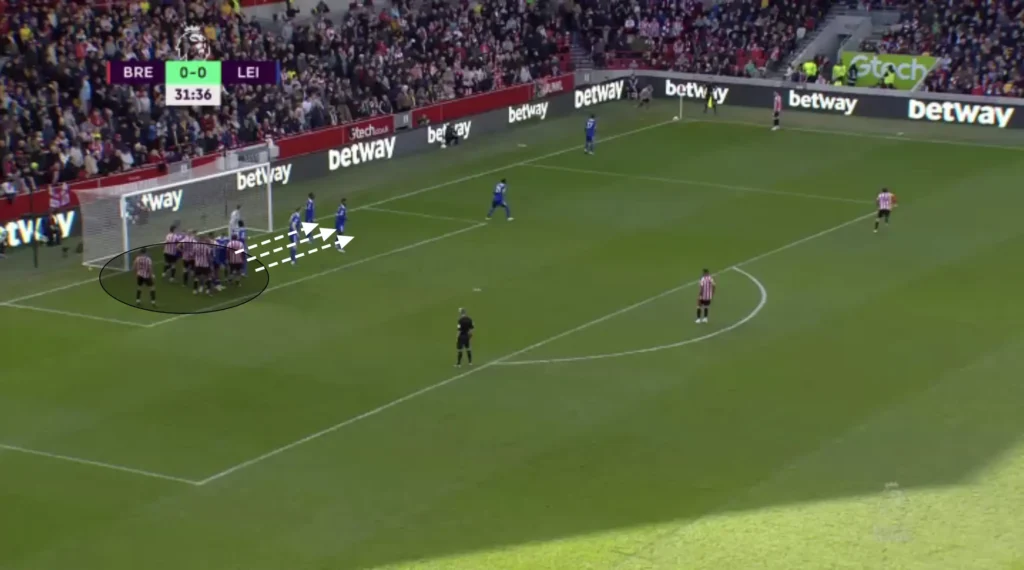
Conclusion
The phases of play form the backbone of football tactics, encapsulating the constant flow of the game. From carefully planned build-up sequences to high-intensity transitions and decisive set-piece moments, each phase requires tactical awareness and execution.
Understanding these phases enhances our appreciation of the game while providing valuable insights into how teams operate on the pitch. Whether it’s a perfectly executed attacking transition or a disciplined defensive block, the phases of play reveal the strategic brilliance behind football’s most iconic moments.
As fans, players, or coaches, mastering these phases is essential for unlocking the secrets of the beautiful game. Football is, after all, not just about scoring goals but about navigating the constant tactical battles that define every match.
